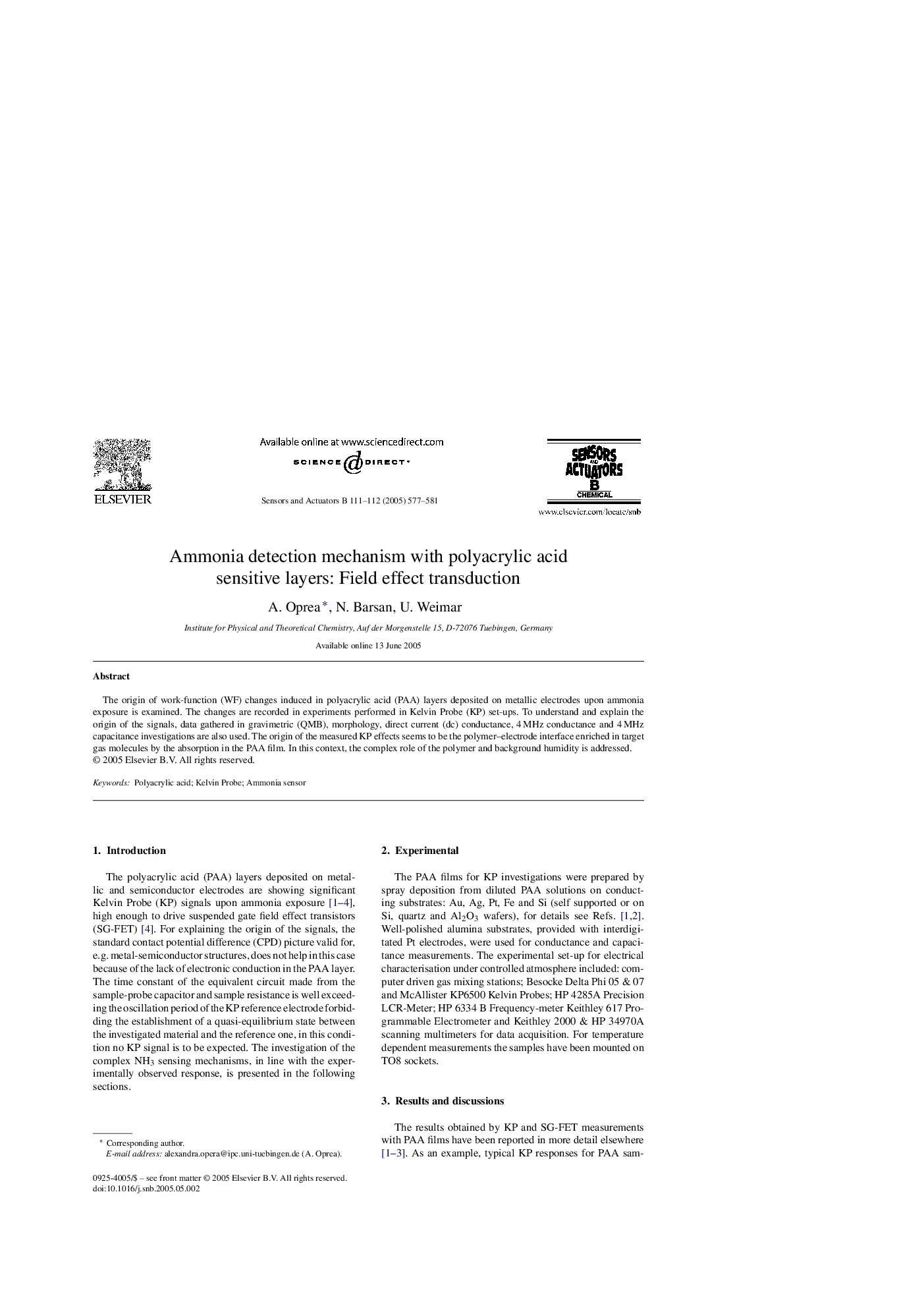| Article ID | Journal | Published Year | Pages | File Type |
|---|---|---|---|---|
| 9700863 | Sensors and Actuators B: Chemical | 2005 | 5 Pages |
Abstract
The origin of work-function (WF) changes induced in polyacrylic acid (PAA) layers deposited on metallic electrodes upon ammonia exposure is examined. The changes are recorded in experiments performed in Kelvin Probe (KP) set-ups. To understand and explain the origin of the signals, data gathered in gravimetric (QMB), morphology, direct current (dc) conductance, 4Â MHz conductance and 4Â MHz capacitance investigations are also used. The origin of the measured KP effects seems to be the polymer-electrode interface enriched in target gas molecules by the absorption in the PAA film. In this context, the complex role of the polymer and background humidity is addressed.
Related Topics
Physical Sciences and Engineering
Chemistry
Analytical Chemistry
Authors
A. Oprea, N. Barsan, U. Weimar,
